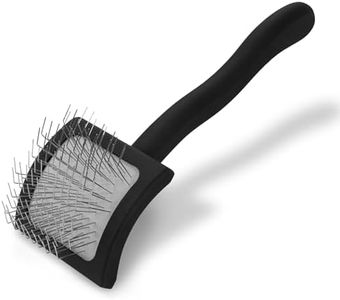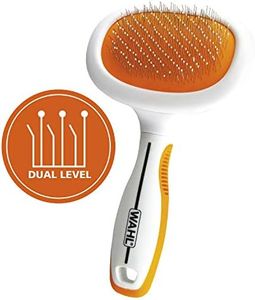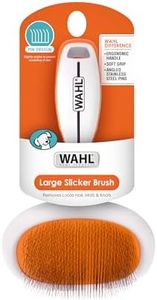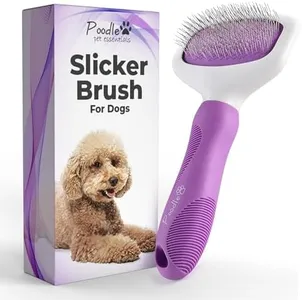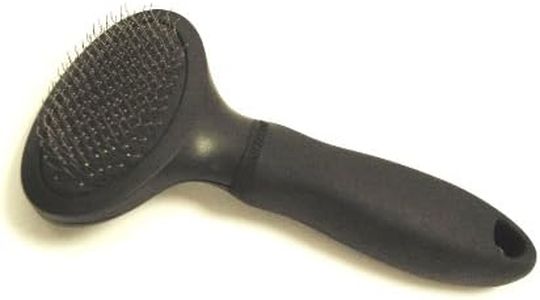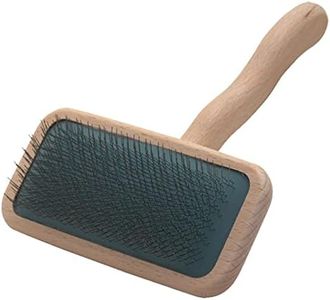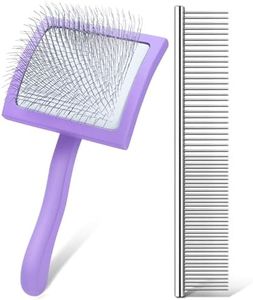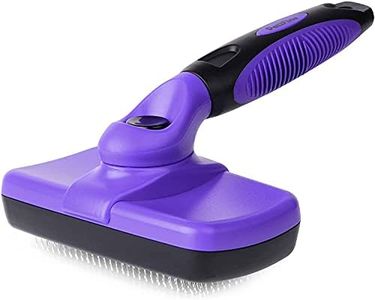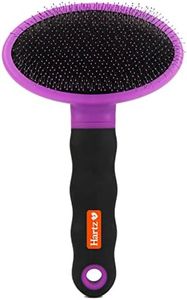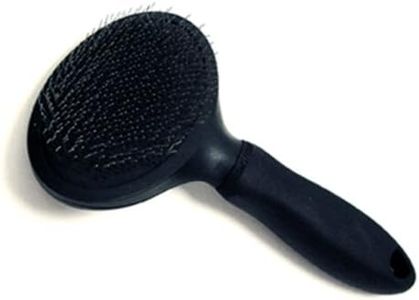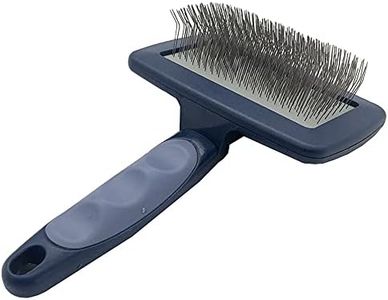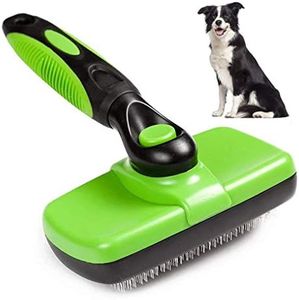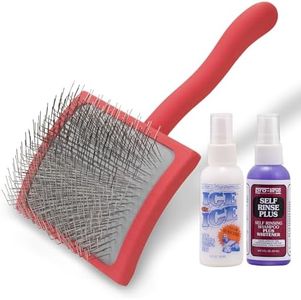We Use CookiesWe use cookies to enhance the security, performance,
functionality and for analytical and promotional activities. By continuing to browse this site you
are agreeing to our privacy policy
10 Best Dog Slicker Brushes
From leading brands and best sellers available on the web.Buying Guide for the Best Dog Slicker Brushes
Choosing the right slicker brush for your dog makes grooming easier, more comfortable for your pet, and more effective at removing loose fur and tangles. Slicker brushes come in different shapes, sizes, and with various features, so it's important to consider your dog's size, coat type, and grooming needs. By understanding the key features, you can select a brush that best keeps your dog's coat healthy and reduces shedding and mats.Brush SizeBrush size refers to the overall dimensions of the slicker brush’s head, which holds the bristles or pins. The size matters because it determines how efficiently you can groom your dog. Larger brushes cover more area and are suitable for bigger dogs or dogs with large, long coats, making the grooming process quicker. Smaller brushes give you precision, making them a good choice for small breeds, puppies, or to groom sensitive areas like the face and legs. To pick the right size, consider your dog's size and the area you will be brushing most often.
Pin/Bristle Length and DensityThe length and density of the pins (or bristles) dictate how deep the brush can reach into your dog's coat and how effectively it can remove tangles and loose fur. Longer, denser pins work well for dogs with thick, double, or long coats, as they reach through the outer fur to detangle the undercoat. Shorter or finer pins are better for dogs with short or fine hair, as they are less likely to irritate the skin. Choose the pin length and density based on the texture and thickness of your dog’s coat.
Pin Tip TypeThe ends of the slicker brush pins may be sharp, rounded, or have protective coatings like plastic balls. Rounded or coated tips are gentler on the skin and help prevent scratching, making them ideal for dogs with sensitive skin or those new to grooming. Sharp or uncoated tips provide more intense grooming and may be more effective at tackling stubborn mats, but they require gentler handling. Consider your dog's sensitivity and the frequency of grooming when choosing pin tip type.
Handle Comfort and GripThis refers to how easy and comfortable the brush is to hold while grooming. Handles may be plain plastic, rubberized, or ergonomically shaped. A comfortable, non-slip handle helps reduce fatigue during long grooming sessions and gives you better control, especially if you have a wiggly dog. If you expect to spend a lot of time grooming, or if you have joint issues, prioritize a brush with a soft, ergonomic handle.
Self-Cleaning FeatureSome slicker brushes come with a self-cleaning button that retracts the pins for easy removal of trapped hair. This feature can save time and reduce hassle, especially if your dog sheds a lot. If convenience and easy maintenance are important to you, look for a brush with a self-cleaning mechanism.
Bristle FlexibilityBristle flexibility indicates how soft or stiff the brush's pins are. More flexible pins are gentler and contour better to the dog’s body, making them suitable for regular maintenance and for dogs with soft skin. Stiffer pins are better at breaking up tough mats or tangles but can be harsher if not used carefully. Match flexibility to your dog's coat condition and sensitivity.
